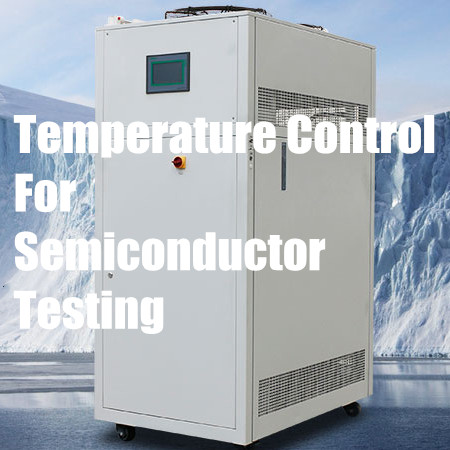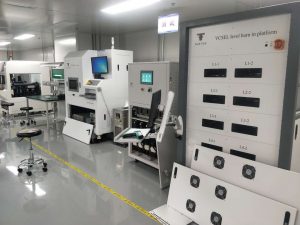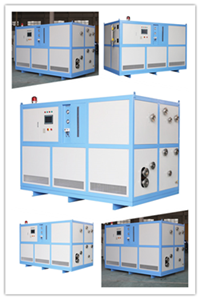Changes in temperature control methods during semiconductor testing
As the use of semiconductor devices expands into new areas, such as automotive electronics, stricter requirements are imposed on their performance. Example: Devices are now required to operate at very low temperatures (about -40°C). To determine whether a particular semiconductor device will operate at these temperatures, the device needs to be fabricated. Testing must be performed at low temperatures before it can be delivered to customers. Conventional methods for testing semiconductor devices at low temperatures include placing a plurality of such devices in a conventional temperature chamber and reducing the ambient temperature therein to the required test temperature. The limitation of this method is that it usually takes about half an hour to reduce the temperature in the chamber to the test temperature. Due to the limited number of devices that can be installed in a given chamber, a half-hour cycle occurs every time a new batch of devices is tested. For production line technology, such long wait times are quite inefficient.
Low temperature test method, which not only reduces the time required to reach the test temperature, but is also compatible with current production line technology. In order to control the temperature of the chuck and thus the temperature of the wafer under test, tool designers have used a variety of techniques. In theory, pure water is very suitable for temperature control of chucks. Its limitations are obvious: Under normal atmospheric pressure, water cannot be used at temperatures below freezing or above boiling point. For actual wafer test operations, the range of 0°C to 100°C is too narrow.
By using a mixture of water and glycol similar to the antifreeze used in automotive radiators, a partial solution to the problem of narrow temperature ranges can be found. This mixture can significantly extend the operating temperature range. Thermal systems using water or water / glycol mixtures as coolants are rarely used in semiconductor testing. They can be used over a wide temperature range, typically around -70°C to + 120°C. Compared to water, even compared to purified water, the cost of synthetic coolants is high. Since these liquids evaporate over time even in closed circuits, the system needs to be refilled periodically.

Aiming at the problems in the semiconductor test industry, LNEYA independently developed and generated a semiconductor test cooling and heating system, which is mainly used for temperature test simulation in semiconductor testing. It has a wide temperature orientation and high temperature rise and fall. The temperature range is -92°C ~ 250°C, suitable for various test requirements. LNEYA is committed to solving the problem of temperature control hysteresis in electronic components. Ultra-high temperature cooling technology can directly cool from 300°C.
The working principle of the cooling and heating system is through the heating and cooling process of the heat-conducting liquid / refrigerant inside the device, taking away the heat on the test bench through the input / output / heating the required heating device to meet the test temperature requirements.
This series of cooling and heating system equipment is suitable for precise temperature control of electronic components. Especially used in the manufacture of semiconductor electronic components in harsh environments, the assembly of IC packages and the engineering and production test stages include electronic thermal testing and other environmental test simulations at temperatures (-45°C to + 250°C). Once put into practical use, these semiconductor devices and electronics can be exposed to extreme environmental conditions to meet stringent military and telecommunications reliability standards.
관련 권장 사항
-
칩 번인 테스트에서 VCSEL이란 무엇인가요? 온도가 어떤 영향을 미치나요?
1584VCSEL의 정식 명칭은 수직 공동 표면 방출 레이저이며, 중국어 명칭은 수직 공동 표면 방출 레이저입니다. 반도체 레이저의 일종입니다. 반도체 레이저는 반도체 제조 기술을 사용하여 제조 된 레이저입니다.
세부 정보 보기 -
Details of the temperature control system of the isolated reactor
1080The temperature control system of the isolated reactor adopts the heat-conducting medium to perform dynamic temperature control of fluid cooling and heating, and to control the cooling and heating of the heat-conducting medium or the reaction mate...
세부 정보 보기 -
칩 테스트 온도 제어 시스템의 드라이버 칩 전원 공급 장치에 대한 설명
950The chip test temperature control system is mainly for the cold heat source test equipment for various drive chips. Before the operation of the Wuxi Guanya chip test temperature control system, the user needs to know the power of the drive chip. I...
세부 정보 보기 -
구체적인 작동 분석 산업용 냉동고 사용 시 제습 방법
1255산업용 냉동고를 사용하는 과정에서 냉동 시스템에 약간의 습기가있을 수 있습니다. 따라서 산업용 냉동고의 제습은 매우 중요하므로 제습하는 방법은 무엇입니까? 제습시 산업용을 구매하는 사용자는 ...
세부 정보 보기
 LNEYA 산업용 냉각기 제조업체 공급 업체
LNEYA 산업용 냉각기 제조업체 공급 업체













